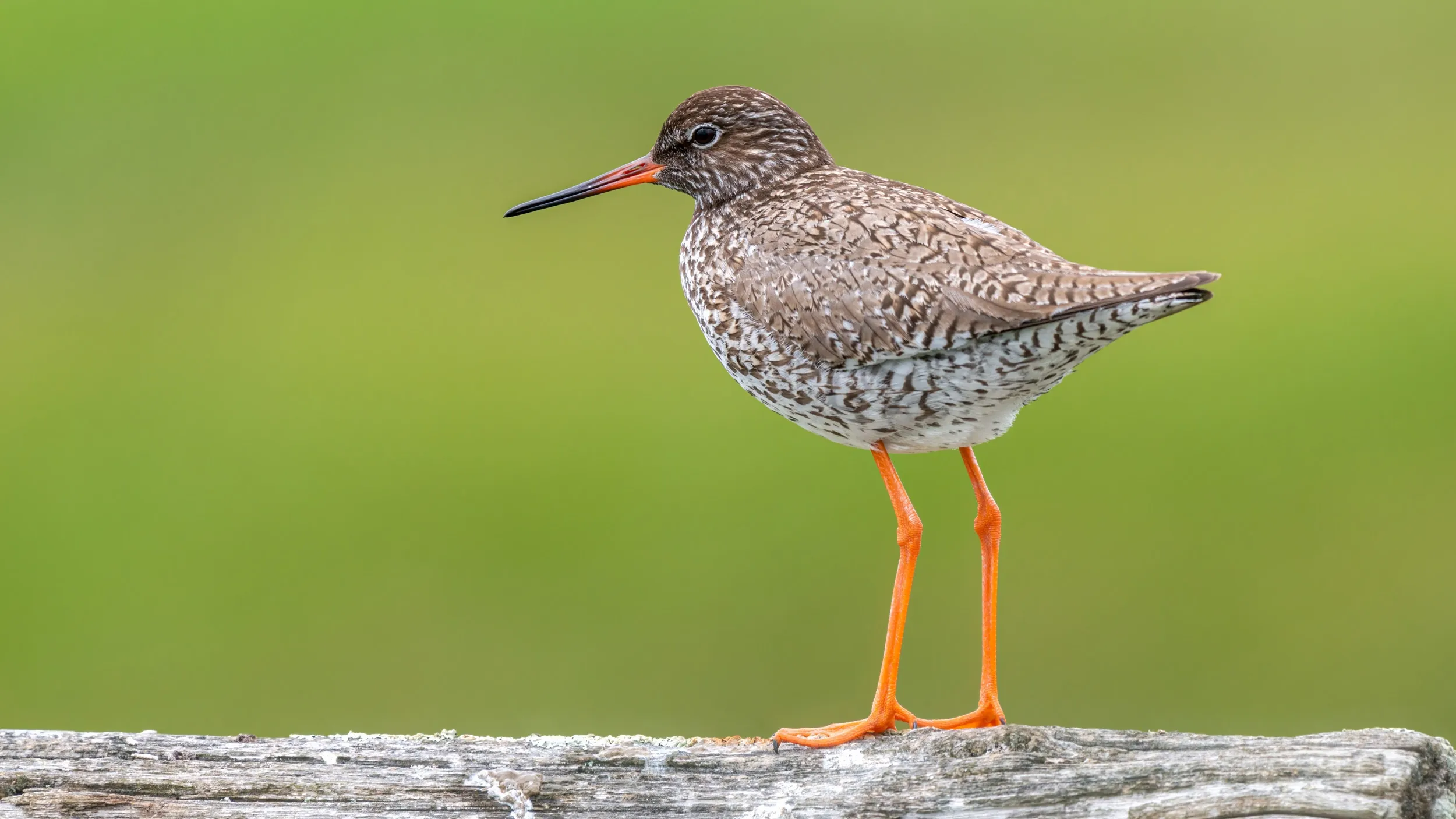
Redshank conservation - Advice for farmers
The Redshank breeds on wet grasslands on upland and lowland farms and on saltmarshes.

On this page
Redshanks in brief
There has been a significant decline in redshank numbers in many areas of the UK. On farmland, the main reasons for this reduction have been the drainage and intensification of grassland management and changes in saltmarsh grazing.
Key points
- Extensively graze wet grasslands and saltmarshes to provide a mosaic of tall and short vegetation.
- Provide standing water into May and June as insect-rich feeding areas for chicks.
What this species needs
Wet ground for feeding
Redshanks feed on insects at the edges of pools and ditches. They are found on wet grassland and saltmarsh which holds shallow surface water or damp soil until June.
Grassland or saltmarsh with a varied sward height
Redshanks are most likely to be found where there is a mosaic of short damp grass for feeding and grass or rush tussocks in which to nest. Longer tussocks of grass and other vegetation on saltmarsh also help to prevent eggs from washing out of nests during high tides.

How to help
Priority action
- Provide grassland or saltmarsh with a varied sward height and surface water or very damp soil until June.
- Extensive grazing suitable for breeding waders and the re-wetting of areas of rough pasture, can both be funded by agri-environment schemes.
On pasture
- Retain boggy ground as this provides suitable feeding areas.
- Create wet areas by blocking drains and small ditches in suitable areas. Shallow open water is particularly important for feeding.
- Use appropriate levels of grazing to maintain short grassland for feeding, with tussocky sedges, rushes or grasses for nesting. Cattle are better able to cope with the wet ground conditions and are more likely to create a variable sward than sheep.
- Low stocking rates in fields used by breeding Redshanks are beneficial in April and May to minimise nest trampling. Ideally, keep stocking levels below one livestock unit per hectare throughout this period and use sedate stock such as suckler cows and calves.
- Try not to allow pastures to become overgrown with rushes. Redshanks benefit from small scattered stands of rush, but levels above 30% cover are detrimental to both bird numbers and productive grazing. You can control rushes by topping in August, followed by either cattle grazing or a second cut six to eight weeks later.
On hay and silage fields
- Avoid rolling or harrowing fields used by breeding waders after 1 April as this will destroy nests and kill chicks.
- Delay silage cutting in fields with breeding waders until at least mid-June or leave some areas of grass uncut alongside ditches, field margins and wet areas of fields to provide a haven for unfledged chicks.
On saltmarsh
- Use low levels of grazing to maintain tussocky grasses for nesting and short vegetation for feeding. Cattle are better able to cope with saltmarsh conditions and are more likely to create a variable sward than sheep.
- If possible, delay grazing saltmarsh until July to reduce trampling of redshank nests during the nesting period (April-June). If delaying grazing is not possible, then leave some areas of the upper saltmarsh ungrazed during April-June to provide a refuge for nesting redshanks, or keep stock levels very low (0.1 unit per hectare) during this period. Higher stocking rates of up to 0.7 units per hectare could be used from July to October to provide an ideal sward for nesting redshank the following spring.